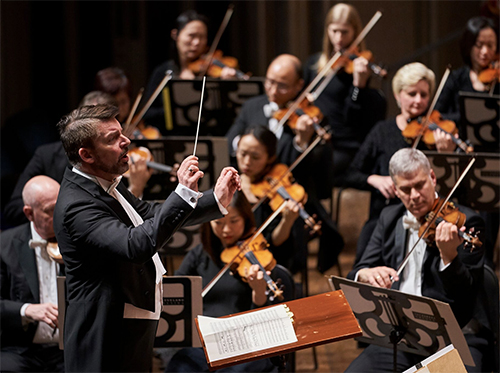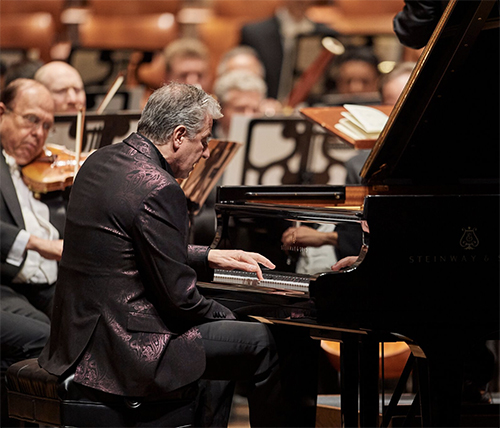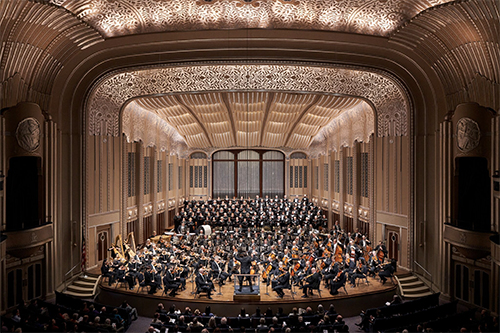by Daniel Hathaway

Well, Thibaudet’s right hand actually just rested in his lap while his left hand covered the whole range of the keyboard in an astonishing display of manual wizardry during Ravel’s Concerto for the Left Hand. Commissioned by Paul Witgenstein, a German pianist whose right arm was amputated due to a World War I injury, the work would be challenging enough if both hands were involved. Thibaudet covered all the notes with admirable sang froid, and especially dazzled in the work’s two huge cadenzas.
That first cadenza, announced in a flourish of parallel chords, followed a short, spooky introduction, its rumbling tremor seemingly proceeding from the underworld thanks to an impressively played solo by contrabassoonist Jonathan Sherwin. The second, more lyrical, came at the end only a dozen bars before the abrupt, cheeky coda.

Pintscher presided over an incisive performance, well-controlled but with room to breathe. The audience rewarded Thibaudet with several enthusiastic curtain calls, and he responded in turn with an affectingly pure, two-handed performance of Ravel’s Pavane pour une enfante defunte.

But the sonic spectacular of the evening was the complete Ballet music for Daphnes and Chloé, subtitled “Chorographic Symphony in Three Parts.” A concatenation of ancient Greek myths with a happy ending, the piece inspired Ravel to invent his own musical visions of classical antiquity, including primitive dances that preceded Stravinsky’s Rite of Spring by a year.

Pintscher steered and controlled the performance with a light but expert hand, almost becoming a dancer himself in its more kinetic moments. Many soloists (including Mark Damoulakis, who cranked a wind machine) were called out during the bows, but flutist Joshua Smith was unforgettable in his role as Pan. But then didn’t “unforgettable” really describe the whole evening?
Photos by Roger Mastroianni.
Published on ClevelandClassical.com February 23, 2018.
Click here for a printable copy of this article



